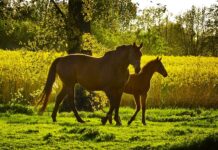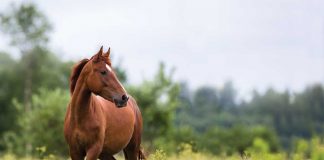Read to learn about horse dentistry and its importance.
The first is Shiloh. During my second year out of vet school, the old, beloved mare couldn’t eat for two weeks after my boss floated her teeth with hand floats.
About five years later, there was Mariah, who for some strange reason kept breaking her teeth. It seemed every few months I’d be called out and find yet another of her molars broken. We were at a loss as to how she was doing it.
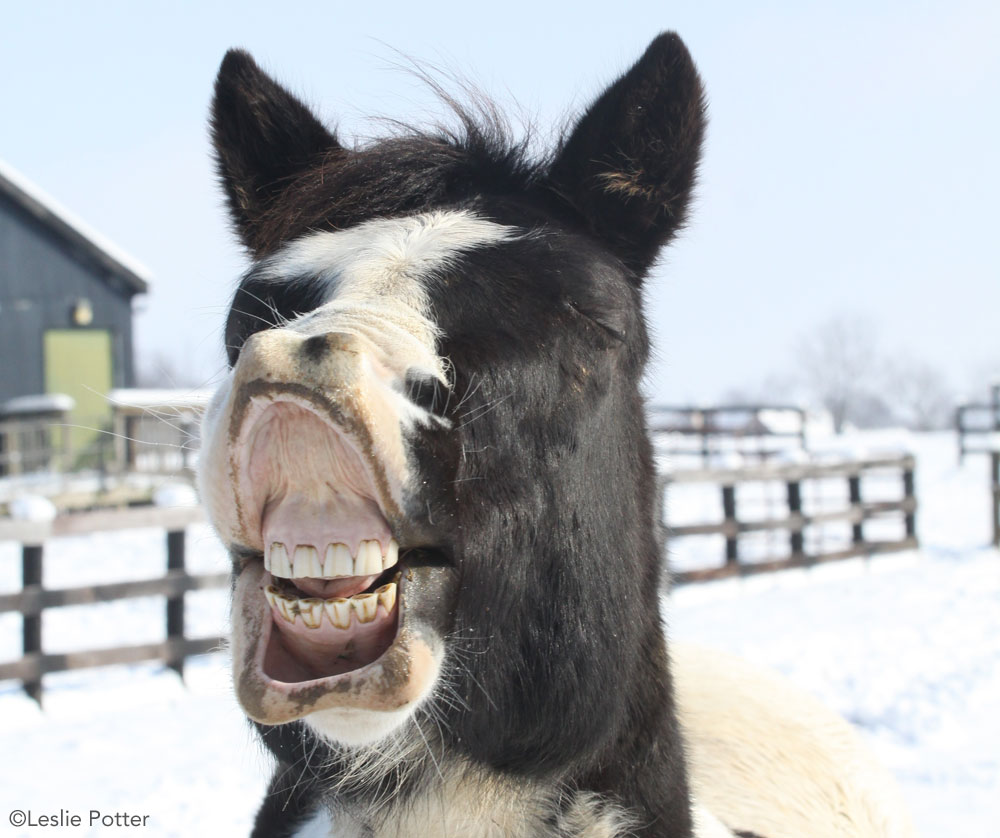
Next was Roulette, who was so mouth-shy that no one could get near her with a dewormer. When I floated her teeth, a process part of horse dentistry, I found the smelliest, rotten broken tooth in her upper molars. I can only imagine the constant tooth pain she was in.
Finally there was Opie, whom I had taken care of for 15 years and a favorite patient. He too got a fractured tooth, and they called in a vet specializing in horse dentistry to fix it when I couldn’t. That put me on the path to improve my horse dentistry skills. I knew I had to do better for Opie and my other clients.
Modern Improvements
Equine vets have stepped up the horse dentistry game big time. Now we have a board certification association that creates actual equine dentists, which is a great deal different than a dental school that certifies non-vets.
We take X-rays of the teeth and we look at tooth root health. We treat gum disease. We have the ability to fill cavities. We no longer expose the sensitive pulp chamber of the teeth. It’s much more than having Joe from down the road come out and float your horse’s teeth.
The Horse’s Mouth
Equine teeth, adapted by nature to constantly chew grass all day, are being constantly worn down. To accommodate this, the horse’s teeth constantly erupt (grow) from the gums. They essentially have very long teeth hidden inside their jaws that emerge as the surface wears down from grinding food.
The horse’s upper jaw is slightly wider than the lower jaw, so the back molars are not completely aligned from side to side. The upper outside and lower inside of the cheek teeth do not touch, and as the teeth are worn down, sharp ridges and points develop on the inside lower teeth and outside upper teeth, or the teeth become slanted from side to side.
The points can become so sharp that they cut the cheeks and tongue, causing ulcers, and after a while, poor grinding causes the horse to drop food. These points, ridges and slants are what need realigning, or what is known throughout the horse world as “floating.” In the horse dentist world, the new term is “occlusal alignment,” which is essentially restoring the grinding surfaces of the teeth—the occlusal surfaces—back to their original alignment for the most effective and efficient chewing.
How the Tooth Works
So why was Shiloh so mouth-sore after being floated that she couldn’t eat, and why did Mariah get so many broken back teeth? It turns out there are some areas of the horse’s teeth that we shouldn’t touch. The structures that allow us to grind down the sharp points and ridges are also the structures that can become diseased or get damaged during attempts to realign the teeth.
Horses’ teeth have a strong enamel covering along with hard reinforcement, called dentin, within a large cavity. This cavity is called the infundibulum. Like us, they have pulp chambers that hold the sensitive nerves.
As the tooth erupts, dentin and enamel are laid down to protect the pulp chambers and harden the center of the tooth within the infundibulum. When we correct the alignment by floating the teeth, we grind down only the edges of the teeth, not the middle of the teeth that touch and grind (called the occlusal surface).
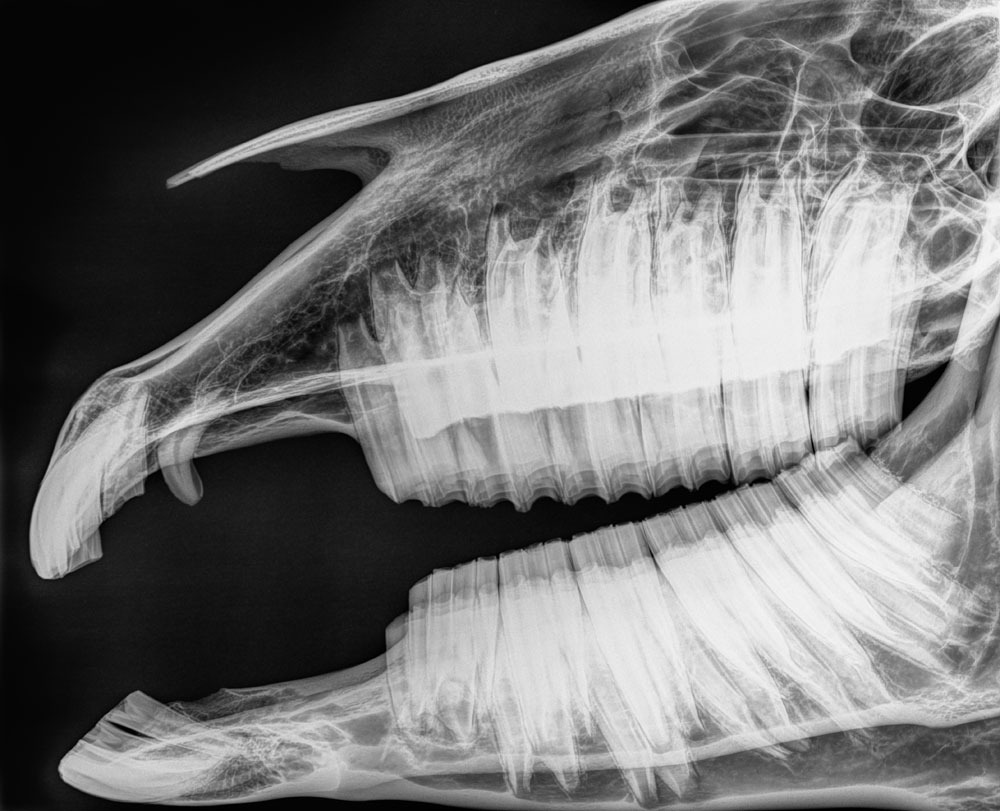
The grinding (occlusal) surfaces interlock with each other in a zigzag pattern with what is known as the transverse ridges. Sometimes teeth are ground down on this occlusal surface in an attempt to flatten those ridges. Only excessive ridges should be taken down.
The danger in grinding down the occlusal surface is exposing the pulp cavity. If this happens, the underlying nerve is exposed and the tooth becomes extremely painful and has the potential to die over the next several months. Studies have shown that there can be as little as 1 to 3 mm of enamel covering the pulp chambers, which makes exposing them and damaging the teeth easy to do.
Wave Mouth
In the case of Shiloh, because of her advanced age, her teeth had worn into what is known as a “wave mouth.” Horses have front teeth, called incisors, used for ripping grass. These are the teeth you see when you lift up the horse’s lips. There are six upper and six lower incisors.
If you are able to open the horse’s mouth and look in the back, you will see the teeth that do all the hard work—grinding hay and grass. There are six upper and six lower large molars on the left and right sides of the mouth, often referred to as the cheek teeth.
The small wolf tooth, if present, is just in front of the first cheek tooth, typically only on the top jaw, and the canines are just behind the front teeth. In the case of wave mouth, the lower cheek teeth form a hump and over-wear the upper cheek teeth, causing a wave.
Where we get in trouble is when we try to correct these misalignments. Sometimes when grinding down the waves and humps to flatten the teeth, we expose the pulp cavity, or the heat generated from the grinding causes heat damage to the pulp chamber.
The front teeth can also get a wave, known as smiley face, or slant from side to side, known as a slant. Where we get in trouble is when we try to correct these misalignments. Sometimes when grinding down the waves and humps to flatten the teeth, we expose the pulp cavity, or the heat generated from the grinding causes heat damage to the pulp chamber.
If attempting to make the teeth look aligned, it is possible to take so much down that the back cheek teeth no longer touch each other and can’t do their normal grinding anymore. This also puts more pressure on the front teeth, making them sore and possibly causing the beginning of a serious disease called equine odontoclastic tooth reabsorbtion and hypercementosis (EOTRH).
Tooth Death
Shiloh was most likely overfloated, something that often happened 20 years ago. If the pulp cavity becomes exposed, sometimes the tooth fixes itself with a patch of dentin to seal off the exposed chamber, but if it doesn’t, the nerve dies slowly, a very painful process.
Since the cheek teeth have multiple pulp chambers that often communicate with each other, this causes the tooth to die. Once it dies, it has the potential to fall out. The process can take months or years.
Dental Caries
In Mariah, Roulette and Opie’s case, their problem wasn’t over-floating or misalignment of the teeth, but rather the tooth itself developed what are known as caries. These weaken the teeth and cause them to fracture.
As mentioned earlier, one of the adaptations of horses’ teeth is the infundibulum. This cavity in the center of the tooth is quite large and runs deep within the tooth. It gets filled in with dentin to help strengthen the tooth.
Only the front teeth and the upper cheek teeth have these specialized cavities. Unfortunately, sometimes these don’t fill in properly with dentin, and a small hole develops in the center of the tooth. This hole can get packed with food and other bacteria and grow in size.
Caries can get very large and involve the pulp chambers. They can get so big and so impacted with food that the tooth splits open, causing a fracture. If left in the mouth, the fractured tooth becomes very painful and can cause gum disease or sinus infections, since the upper cheek teeth are within the sinus cavity.
Diseases
Other areas of concern in the horse’s mouth are the gums and the front teeth. Horses can and do get gum disease. The most common form is a space between the cheek teeth, called a diastema, which allows food to get impacted between the teeth.
This impacted food is a source of infection, and if left unchecked, causes gum disease by creating deep, infected pockets. These pockets can cause loosening of the teeth, leading to possible tooth loss and pain.
EOTRH is a dental disease that is being more commonly recognized. This is a disease of the incisors (front teeth), where the bone surrounding the teeth becomes inflamed.
The initial response by the jawbone to this inflammation is loosening of the teeth because the bone surrounding them becomes reabsorbed. Once the body realizes the teeth are loose, it overcompensates by laying down extra calcium to try and strengthen the area and save the tooth. Instead, there is a lot of pain, destruction of the tooth, excessive enlargement of the tooth roots, and fractures in the teeth.
Begin with an Exam
We’ve come a long way from the days of Shiloh. Now the accepted practice is the oral exam, not just floating the teeth. We sedate each horse and open the mouth fully with a speculum to look at each tooth with a bright light and a mirror or endoscope (special camera that can get to the back of the mouth).
We examine the infundibulum and pulp chambers for caries, fractures or damage to the chambers. We look at the gums with a mirror or endoscope for signs of gum disease. We use special picks and probes to determine how big and deep the caries or gum pockets are. We take X-rays, computer topography (CT) scans and bone scans of the teeth to determine if the tooth roots are healthy.
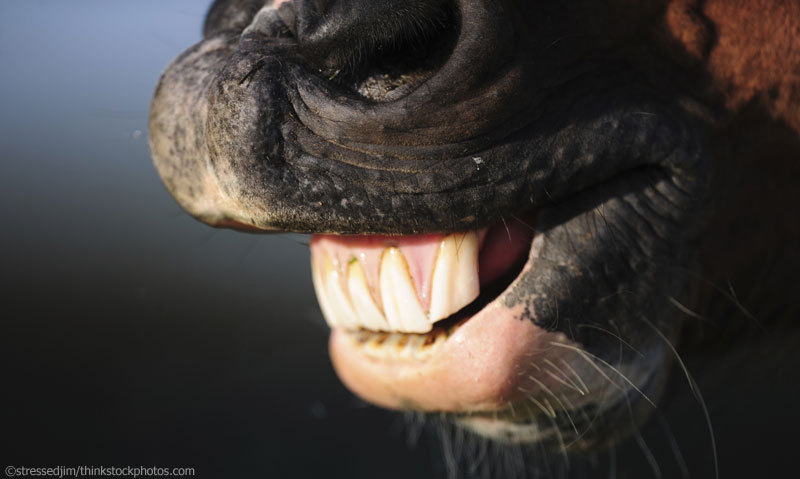
We clean out caries and fix diastemas by opening the gaps between teeth, which prevents food from becoming trapped. We extract diseased cheek teeth and incisors in a much more humane and pain-free way.
And we’ve gone back to school. Now there are many specialized courses for vets to learn these new techniques. For those who want to take it to the next level, a true veterinary dental association board-certifies veterinarians that want to become dental specialists.
These specialized horse dentists and others are developing new techniques to try and save teeth. They are working on ways to fill in caries before they fracture, giving the tooth a filling and doing root canals.
Horse dentistry is no longer your average Joe’s float job. It’s real dentistry, and vets are getting on board.
Janice Posnikoff, DVM, was the owner and principal vet at Orange County Equine Vet Services in Orange County, Calif., for over 20 years. After spending time in Maryland and Virginia, she now brings her love of dressage and expertise in sport horse medicine to her hometown city of Winnipeg, Canada at Elders Equine Vet Services as an associate vet. She lives and practices there with her five bunnies, close to family and friends.
This article about horse dentistry originally appeared in the March 2018 issue of Horse Illustrated magazine. Click here to subscribe!
Further reading:



